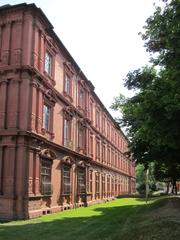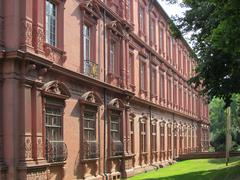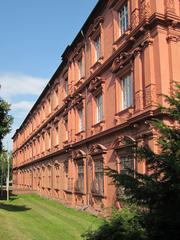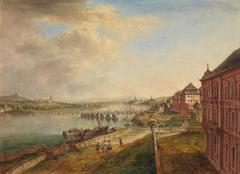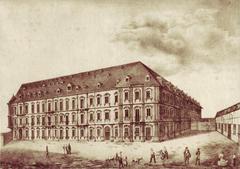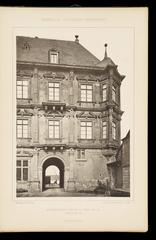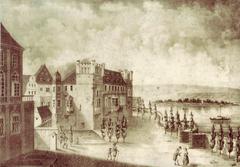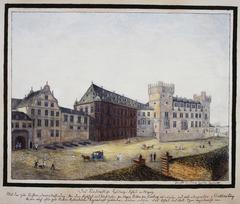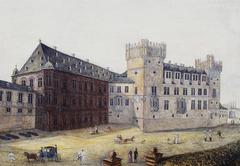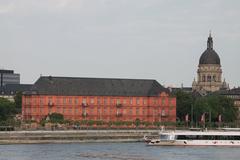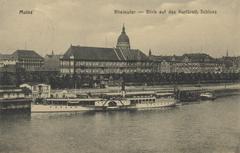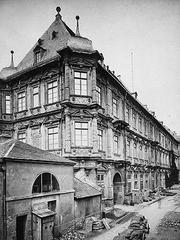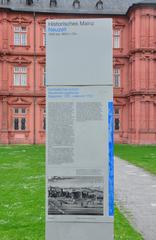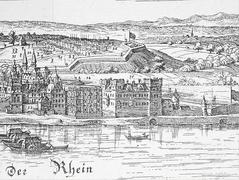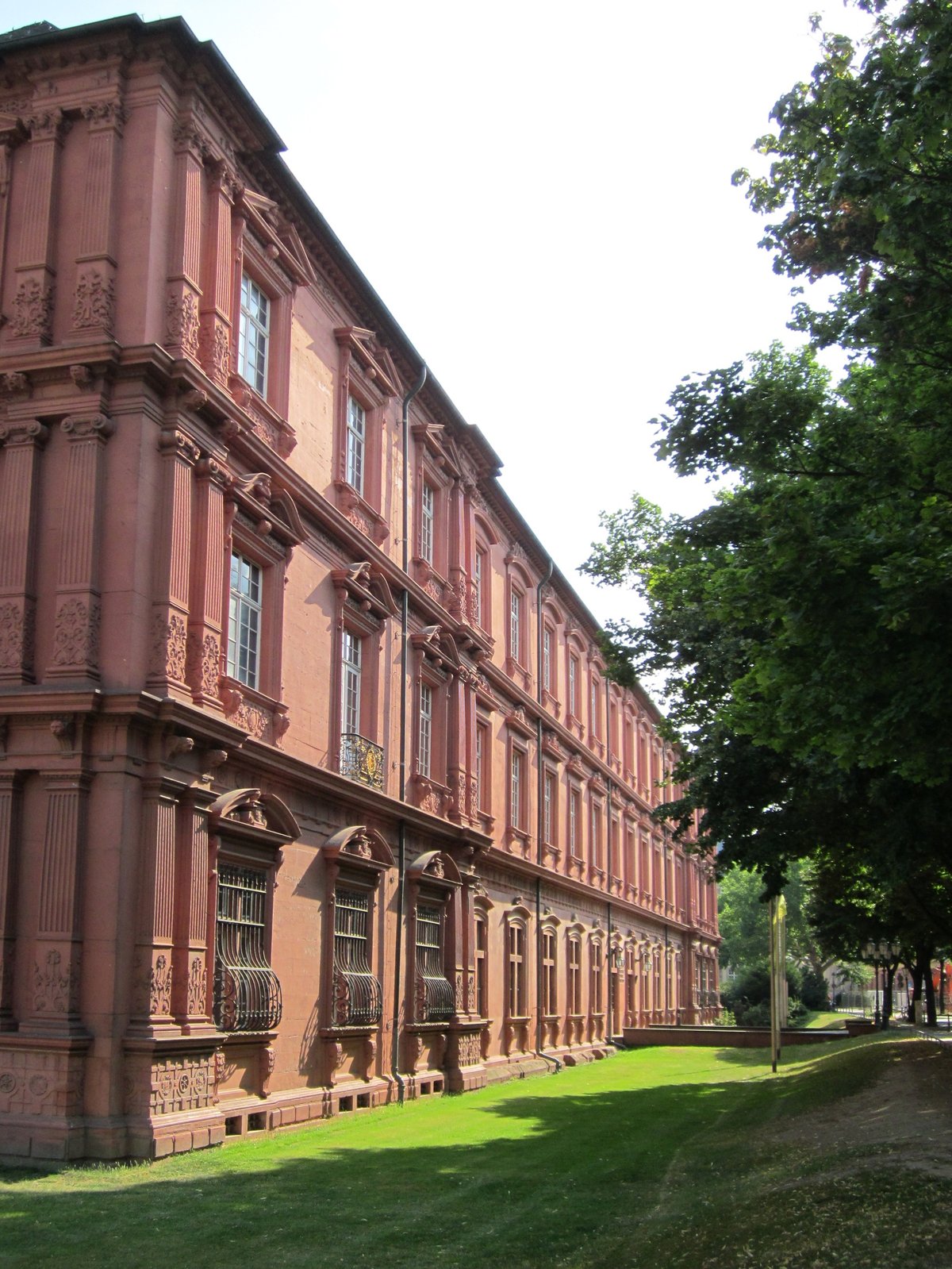
Electoral Palace Mainz: Visiting Hours, Tickets, and Historical Sites Guide
Date: 14/06/2025
Introduction: Discovering the Electoral Palace Mainz
The Electoral Palace (Kurfürstliches Schloss) in Mainz stands as a monumental testament to the city’s illustrious past, architectural grandeur, and enduring position as a cultural crossroads on the Rhine. Once the residence of the prince-electors and archbishops of Mainz during the Holy Roman Empire, the palace today captivates visitors with its striking Renaissance-Baroque façade, richly appointed interiors, and role as a vibrant cultural venue. Overlooking the Rhine and adjacent to other significant landmarks, such as Mainz Cathedral and the Gutenberg Museum, the Electoral Palace is a focal point for anyone seeking to understand Mainz’s historical and architectural legacy. This detailed guide covers the palace’s history, architectural highlights, visiting hours, ticketing, accessibility, tours, and travel tips to help you plan an enriching visit (mainz.de; Germany Travel; RLP Tourismus).
Table of Contents
- Introduction
- Historical Overview
- Architectural Highlights
- Visiting Information
- Visitor Tips and Nearby Attractions
- Frequently Asked Questions (FAQs)
- Conclusion
- Visual and Interactive Resources
- Official Sources and Further Reading
Historical Overview
Early Foundations and Medieval Predecessors
The location of today’s Electoral Palace originally hosted the Martinsburg, a fortress-residence built in the late 15th century by Archbishop Diether von Isenburg. This stronghold reflected Mainz’s dual role as both a religious and political center, with fortifications emphasizing the archbishops’ need for security and power (mainz.de).
With the dawn of the Renaissance and the rising prestige of the Electorate of Mainz, the Martinsburg was deemed insufficient for the evolving tastes and ambitions of the prince-electors.
Construction and Architectural Evolution
Construction of the present Electoral Palace began in 1627 under Prince-Elector Georg Friedrich von Greiffenklau, with the intention of rivaling the great palaces of the Holy Roman Empire. The Thirty Years’ War and subsequent conflicts caused significant delays, stretching completion into the 18th century. The result is an architectural ensemble that blends early Baroque structures with Renaissance symmetry and flourish (mainz.de; Kiddle).
The palace is characterized by its red sandstone façade, ornate window surrounds, corner turrets, and decorative gables. The north wing, completed in the 18th century, harmonizes with the original design, underscoring the building’s architectural continuity.
The Palace as a Political and Cultural Hub
During the 17th and 18th centuries, the Electoral Palace was the epicenter of Mainz’s political power, serving as the residence and administrative seat for the prince-electors, who also bore the prestigious title of Archchancellor of the Holy Roman Empire. This dual religious and secular authority placed Mainz at the heart of imperial affairs, making the palace a venue for imperial diets, courtly ceremonies, and diplomatic gatherings (Germany Travel).
Transformations from the 18th Century to Today
The palace’s role shifted dramatically after the French Revolutionary Wars, when Mainz was occupied by French forces and the palace repurposed for military use. The dissolution of the Holy Roman Empire in 1806 marked the end of its function as a princely residence. Through the 19th and 20th centuries, the palace adapted to civic uses and survived the devastation of World War II, with significant restoration work preserving its Renaissance-Baroque character (mainz.de).
Today, the Electoral Palace is a centerpiece of Mainz’s cultural life, hosting exhibitions, concerts, public events, and housing the Römisch-Germanisches Zentralmuseum (Wikipedia; RLP Tourismus).
Architectural Highlights
- Façade: The palace’s 75-meter symmetrical red sandstone façade, adorned with Renaissance motifs, is a defining feature of the Mainz cityscape.
- Corner Turrets and Decorative Elements: Distinctive turrets, window surrounds, and gables blend elegance with fortification.
- Interior Spaces: While many original interiors were lost to war and occupation, the palace retains several grand halls, including the north wing hall used for major events like the Mainz carnival session “Mainz bleibt Mainz, wie es singt und lacht.”
- Materials and Restoration: Use of locally quarried red sandstone and period-accurate roofing materials ensure the palace’s authenticity, and extensive post-war restoration has maintained its historical ambiance (Kiddle; Mainz Tourism).
Visiting Information
Opening Hours
- Standard Opening: Tuesday to Sunday, 10:00 AM – 5:00 PM. Closed Mondays and public holidays.
- Special Events: Hours can vary for exhibitions or private events—check the official website for updates.
Tickets and Admission
- General Admission: Adults €8, reduced (students/seniors) €5, children under 16 free (Triplyzer).
- Special Exhibitions/Tours: Additional fees may apply. Tickets can be purchased online or at the entrance.
Guided Tours
- Languages: English and German tours available daily at set times (typically 11:00 AM and 3:00 PM).
- Booking: Group and private tours may be arranged through the visitor center.
Accessibility
- Wheelchair Access: Ramps and elevators provide access to most public areas.
- Assistance: Available upon request; contact in advance for specific needs (RLP Tourismus).
Visitor Tips and Nearby Attractions
- Public Transport: The palace is easily reached by tram or bus from Mainz central station; nearest stop: “Schloss.”
- Parking: Several garages nearby, though spaces may be limited during major events.
- Combine Your Visit: Explore Mainz Cathedral, Gutenberg Museum, and stroll the Rhine promenade for a full historical experience.
- Events: Plan ahead for major events like the Mainz carnival and Wine Market for a lively local atmosphere (German Sights).
Frequently Asked Questions (FAQs)
Q: What are the Electoral Palace Mainz visiting hours?
A: Tuesday to Sunday, 10:00 AM–5:00 PM (closed Mondays and public holidays). Check for special event hours (Mainz Congress).
Q: How do I buy tickets?
A: Online via the official Mainz tourism site or at the palace entrance. Booking ahead is advised in peak periods.
Q: Is the Electoral Palace accessible for visitors with disabilities?
A: Yes, with ramps, elevators, and accessible restrooms. Contact the palace in advance for further assistance.
Q: Are guided tours available in English?
A: Yes, English tours are available by prior arrangement.
Q: Can I take photographs inside?
A: Photography is generally allowed in public areas, but not during special exhibitions or events. Flash and tripods are prohibited in museum spaces.
Conclusion
The Electoral Palace Mainz is an iconic symbol of the city’s spiritual, political, and cultural journey from the late Middle Ages to the present. Its beautifully restored façade, grand event spaces, and museum collections invite visitors to experience Mainz’s storied past firsthand. Whether exploring its architectural marvels, attending a vibrant festival, or simply strolling its gardens, the palace remains an essential stop for all who wish to appreciate Mainz’s unique heritage.
For real-time updates, event schedules, and exclusive visitor resources, download the Audiala app and follow official Mainz tourism channels.
Visual and Interactive Resources
Alt text: Early Baroque red sandstone façade of the Electoral Palace Mainz Alt text: Ornate Grand Hall interior of the Electoral Palace Mainz with decorative Baroque elements
Official Sources and Further Reading
- Museums, Churches and Palaces, Mainz.de
- Electoral Palace, Mainz, Kiddle
- Mainz Tourism, Mainz-tourismus.com
- Germany Travel: Mainz
- Things to do in Mainz, Triplyzer
- Electoral Palace Mainz, Wikipedia
- Kurfürstliches Schloss Mainz, RLP Tourismus
- Electoral Palace Mainz Visitor Information, Mainz Congress
- The Tourist Checklist: Things to do in Mainz
- German Sights: Mainz
